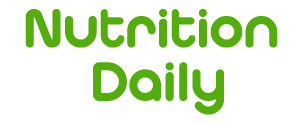According to WHO factsheet tuberculosis is one of the top 10 leading causes of death worldwide. In the year 2017, about 10 million people suffered from TB while 1.6 million people died from this disease. It is even one of the main cause of death among HIV-positive people as their immunity is already compromised. Terminating the TB outbreak by the year 2030 is among the health targets of the Sustainable Development Goals.
Mycobacterium tuberculosis is the main pathogen which is responsible for the fatal disease tuberculosis. However, it is curable, preventable and treatable if diagnosed on time otherwise can be fatal if remained undiagnosed or untreated. TB bacteria are most likely to affect the lungs but in certain cases, it can also affect other body parts which are referred to as extra-pulmonary tuberculosis (EPTB). Bone and joint TB is one type of EPTB which affects the spine, long bones and joints.

TB is a contagious airborne disease which can be transmitted from one infected person to another person via air. Lungs or throat TB can be spread through coughs, sneeze or talking as droplets carrying bacteria are released into the air. Therefore, wearing a mask or any coverings may prevent from getting lungs TB.
Types of tuberculosis
Active TB:In this type, TB bacteria multiplies abruptly and pervades in different body organs. An individual with active pulmonary TB disease may be transmitted to another through air containing infectious particles. If not treated properly then approximately 45% of HIV negative individuals with TB and almost all the HIV positive people with TB may die.
Symptoms: Cough, fever, night sweats and weight loss.
Miliary TB: It is a typical form of the active disease which occur when TB bacteria invades into the bloodstream. It affects multiple organs at a time as bacteria spread rapidly all the over the body in tiny nodules.
Latent TB: In this type, people are contaminated by TB bacteria but do not feel sick as their body is able to fight against it. This kind of TB is non-transmittable means cannot be spread. According to WHO factsheet around one-quarter of the world’s population has latent TB.
Who are at Risk?
It has been estimated that over 95% of cases and death due to TB are observed in developing countries.
Although all the age groups are at risk adults are more commonly affected in their most productive years. Moreover, people with a weak immune system like HIV patients, diabetes, malnutrition and tobacco consuming people increases the risk of TB disease.
Nutritional requirement in patients with active TB
Nutritional support is essential for active TB patients as undernutrition and severity of disease are interdependent. It is a vicious cycle where undernutrition may lead to progression of latent TB to active TB worsening the disease.
Henceforth, a well-balanced diet incorporating every single food group is important to improve the conditions and prevent malnutrition.
|
Major Nutrients |
Requirement |
Food sources |
|
Energy requirements |
Energy requirement depends on the age, gender and activity levels. Additional energy is required for reversing the nutritional deficiencies. Energy-dense foods should be added |
Whole grain cereals (oats, wheat, wholemeal pasta, quinoa, suji, porridge), millets, breakfast cereals, chikki, banana, rava, hawla, rava laddoo, khichdi, kheer and so on. |
|
Carbohydrates |
It is recommended that 55-75% of total energy needs should be derived from carbohydrates. It is important to include complex carbs and dietary fibres in an adequate amount. |
|
|
Proteins |
1.2-1.5 g/kg ideal body weight/day. Protein requirements are increased in case of metabolic stress associated with active disease |
Animal protein: Milk, Milk products (yogurt, curd, cheese and paneer), meat, chicken, fish, egg etc. Plant proteins: Pulses, oilseeds, nuts, chia seeds, sesame seeds, soya, tofu and tempeh. |
|
Fats |
15-30% of total energy intake comes from fat. Fats and oils are calories rich. TB patients who are unable to eat foods in large amount can accomplish their energy requirements through fats and oils. |
Mustard oil, canola oil, olive oil, groundnuts, fish oil, peanuts, soya oil, butter and cream. |
|
Vitamins & Minerals |
Vitamin and mineral requirement can slightly increase in case of undernutrition or to improve the condition. Vitamins such as folic acid, Vitamin C, A, E and B complex. |
Include all hues of fruits and vegetables. Fruits such as papaya, apple, custard apple, apricot, grapes, berries, mango, banana and so on. Vegetables include all kind of seasonal vegetables, broccoli, cabbage, cauliflower, red bell pepper, artichoke, amla, garlic, parsley, etc. For minerals add nuts, oilseeds, eggs and fishes. |
References
- National Jewish Health.(2013).Tuberculosis: Types.Retrieved from https://www.nationaljewish.org/conditions/tuberculosis-tb/types
- WHO.(2018).Tuberculosis.Retrieved from https://www.who.int/news-room/fact-sheets/detail/tuberculosis





